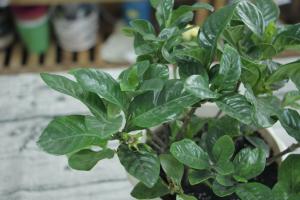Can I Plant Beans Next to Tomatoes?
Many gardeners are constantly looking for ways to maximize their growing space and get the most out of their plants. One question that often comes up is whether or not beans can be planted next to tomatoes. The short answer is yes, but there are some important things to keep in mind.
Consider the Growing Requirements of Beans and Tomatoes
Before planting any two vegetables together, it is important to consider their individual growing requirements. Beans and tomatoes have some similarities, but there are also some key differences that must be taken into account.
For example, both beans and tomatoes prefer full sun and well-drained soil. However, beans are typically nitrogen-fixing plants, meaning they draw in nitrogen from the air and convert it into a form that can be used by the plant. Tomatoes, on the other hand, are heavy feeders and require plenty of nitrogen throughout the growing season.
The Benefits of Companion Planting
Despite their different growing requirements, there are some benefits to planting beans and tomatoes together. One of the biggest benefits is that beans can help to deter pests from attacking the tomato plants. Because beans fix nitrogen in the soil, they can help to make the soil less attractive to pests like nematodes, which are known to attack tomato roots.
In addition, the beans can also provide a bit of shade for the tomatoes, which can be helpful in hot, sunny locations. And because beans grow up tall structures like trellises or poles, they can help to create a vertical growing space where there may not have been one before.
Tips for Planting Beans and Tomatoes Together
If you decide to plant beans and tomatoes together, there are a few tips to keep in mind to ensure the best possible results.
First, make sure that the beans are planted at least 12 inches away from the tomatoes to give both plants enough space to grow. It is also a good idea to plant the beans slightly closer to the trellis or pole than the tomatoes to encourage them to climb in the right direction.
Second, consider planting bush beans rather than pole beans. Bush beans tend to take up less space than pole beans and may be a better option if you have limited space in your garden. If you do opt for pole beans, make sure that they are planted in a location where they will not shade the tomatoes too much.
In Conclusion
While there are some important things to consider when planting beans and tomatoes together, there are ultimately many benefits to this type of companion planting. By being mindful of the needs of each plant and strategically planting them together, you can create a healthy, thriving garden that produces plenty of delicious veggies.

 how many times do yo...
how many times do yo... how many planted tre...
how many planted tre... how many pine trees ...
how many pine trees ... how many pecan trees...
how many pecan trees... how many plants comp...
how many plants comp... how many plants can ...
how many plants can ... how many plants and ...
how many plants and ... how many pepper plan...
how many pepper plan...
































